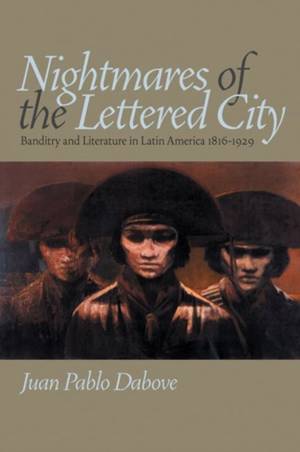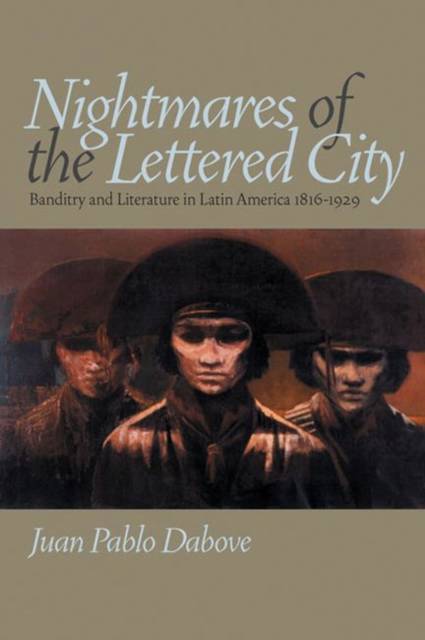
- Afhalen na 1 uur in een winkel met voorraad
- Gratis thuislevering in België vanaf € 30
- Ruim aanbod met 7 miljoen producten
- Afhalen na 1 uur in een winkel met voorraad
- Gratis thuislevering in België vanaf € 30
- Ruim aanbod met 7 miljoen producten
Nightmares of the Lettered City
Banditry and Literature in Latin America, 1816-1929
Juan Pablo DaboveOmschrijving
Nightmares of the Lettered City presents an original study of the popular theme of banditry in works of literature, essays, poetry, and drama, and banditry's pivotal role during the conceptualization and formation of the Latin American nation-state.
Juan Pablo Dabove examines writings over a broad time period, from the early nineteenth century to the 1920s, and while Nightmares of the Lettered City focuses on four crucial countries (Argentina, Mexico, Brazil, and Venezuela), it is the first book to address the depiction of banditry in Latin America as a whole. The work offers close reading of Facundo, Doña Bárbara, Os Sertões, and Martín Fierro, among other works, illuminating the ever-changing and often contradictory political agendas of the literary elite in their portrayals of the forms of peasant insurgency labeled "banditry."
Banditry has haunted the Latin American literary imagination. As a cultural trope, banditry has always been an uneasy compromise between desire and anxiety (a "nightmare"), and Dabove isolates three main representational strategies. He analyzes the bandit as radical other, a figure through which the elites depicted the threats posed to them by various sectors outside the lettered city. Further, he considers the bandit as a trope used in elite internecine struggles. In this case, rural insurgency was a means to legitimize or refute an opposing sector or faction within the lettered city. Finally, Dabove shows how, in certain cases, the bandit was used as an image of the nonstate violence that the nation state has to suppress as a historical force and simultaneously exalt as a memory in order to achieve cultural coherence and actual sovereignty.
As Dabove convincingly demonstrates, the elite's construction of the bandit is essential to our understanding of the development of the Latin American nation in the nineteenth and early twentieth centuries.
Specificaties
Betrokkenen
- Auteur(s):
- Uitgeverij:
Inhoud
- Aantal bladzijden:
- 400
- Taal:
- Engels
- Reeks:
Eigenschappen
- Productcode (EAN):
- 9780822959564
- Verschijningsdatum:
- 6/06/2007
- Uitvoering:
- Paperback
- Formaat:
- Trade paperback (VS)
- Afmetingen:
- 152 mm x 229 mm
- Gewicht:
- 574 g

Alleen bij Standaard Boekhandel
Beoordelingen
We publiceren alleen reviews die voldoen aan de voorwaarden voor reviews. Bekijk onze voorwaarden voor reviews.











